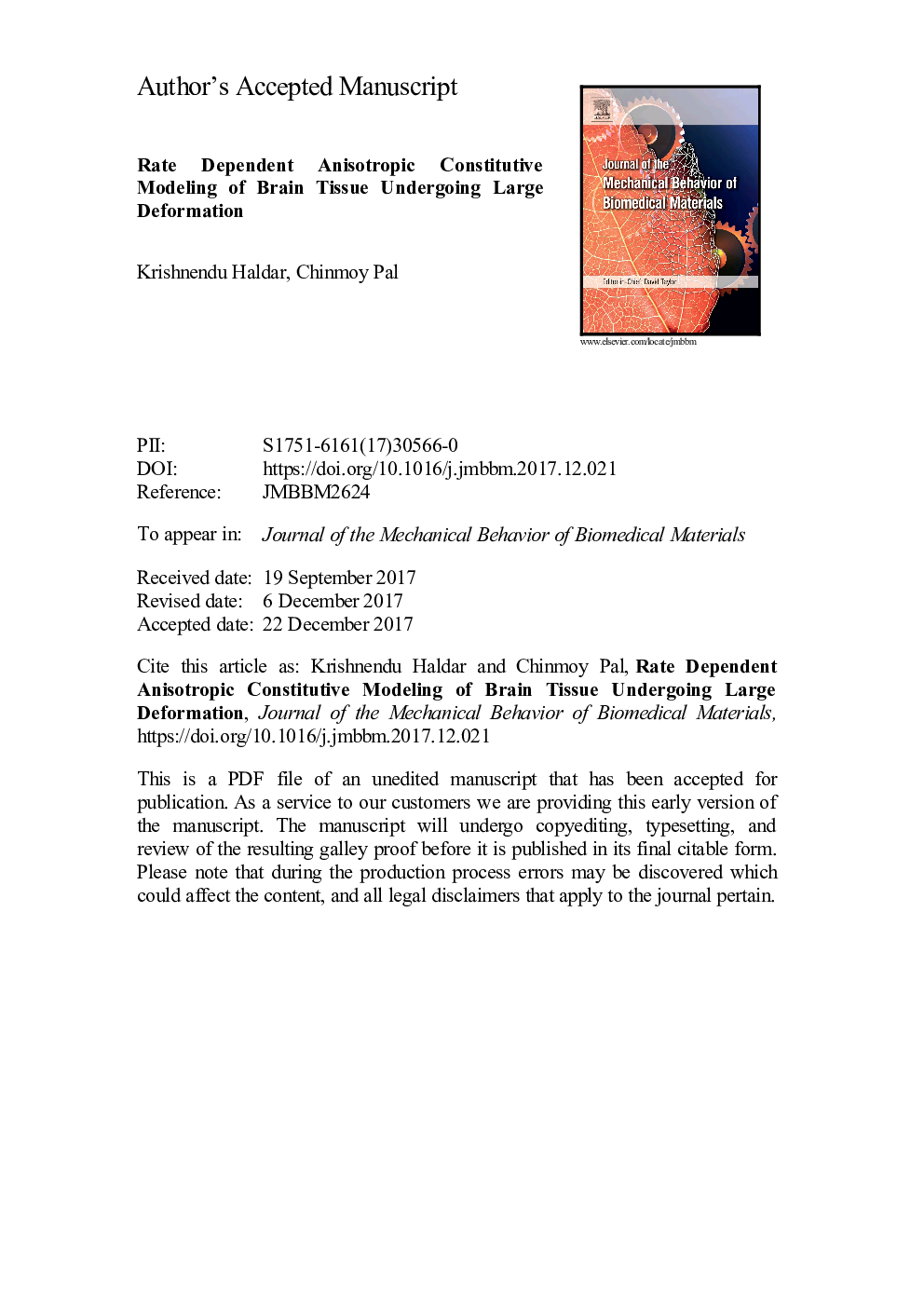| Article ID | Journal | Published Year | Pages | File Type |
|---|---|---|---|---|
| 7207123 | Journal of the Mechanical Behavior of Biomedical Materials | 2018 | 36 Pages |
Abstract
This study aims constitutive modeling of rate dependent anisotropic viscoelastic brain tissue that experiences large deformation during accidental impact. Many experimental studies confirm that brain parenchyma mechanisms are strongly influenced by anisotropy, nonlinear viscoelasticity, rate dependent loading/unloading and tension-compression asymmetry of the soft brain tissues. We present a rigorous thermodynamically consistent phenomenological approach to capture these mechanisms in a single model. Model parameters are calibrated from the experiments, and mechanical responses are predicted for different loading conditions. We consider a 2-D fibrous circular tube geometry, an idealized form of a human head, to simulate shear stress distribution for a given boundary condition. Different orientations of the fibers are considered to investigate the influence of anisotropy on the shear stress. Finally, stretch rate dependency of stress responses for a particular fiber orientation is demonstrated.
Related Topics
Physical Sciences and Engineering
Engineering
Biomedical Engineering
Authors
Krishnendu Haldar, Chinmoy Pal,
